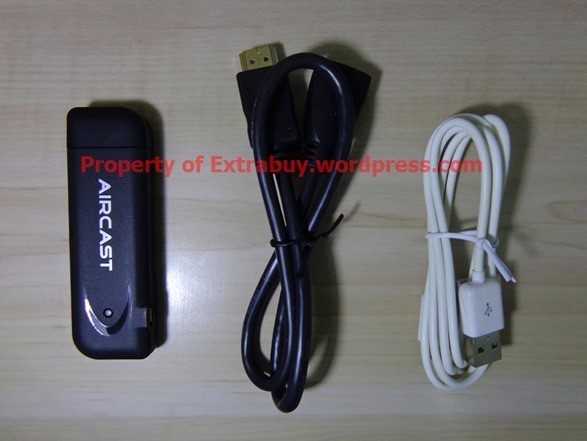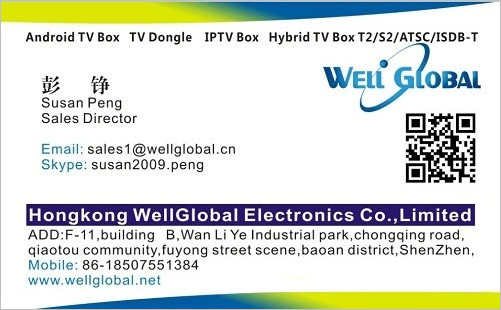This review will be focusing on two Miracast TV Dongles, WGM3 & WG168 (T516) from WellGlobal Electronics Co., Ltd. The Company’s main products include manufacturing and selling Android TV Boxes, Android TV Dongles, Tablet PC Accessories, Wireless TV Dongles with Rockchip /Actiontec Chipsets.
Rockchip is probably the best high-performance chipset suitable for Miracast (Mirroring) applications with faster 1.2GHz CPU compared to cheaper low-level hardware in Action Chipset based TV dongles from Action Microelectronics Co., Ltd., that use 600Mhz CPU (Note: Depends on Chipset Model).
That being said, both devices are based on Rockchip’s RK2928 Soc solution with different casing design. What is unique about them, is that both have external long-range foldable Antennas, a nice option to have if your TV is located far away from an access point unit (Router) and you need a strong WIFI signal.
Main Features:
- Operating system : Linux OS,Kernel : 3.0.8 ( For max Stability ).
- HD video decoder (1080p @60fps).
- External WIFI Antenna for strong single transmission – up to 10M distance Mirroring.
- DLNA compatible push protocol, Android phone, Android tablet users sharing tool.
- Support all Android Phones & Tablets PC with Miracast option from Android 4.2 and above.
- Two modes switch button – Miracast and DLNA.
- Airplay Supported.

WGM3 & WG168 (T516 ) Models

WGM3 Package


Unboxing – WGM3 Unpacked from Carton Box

WG168 Package:
- 1x Micro USB Power Cable.
- 1x WG168 Wireless Display Adapter.
- 1x HDMI Cable.

WGM3 Package:
- 1x Micro USB Power Cable.
- 1x WG168 Wireless Display Adapter.
- 1x Manual.
- 1x HDMI Cable.

Design
WG168 Antenna is colored in red. Personally, I like all products color to be black as my TV, if we leave the color issue that can be fixed easily, casing design is pretty smart. Antennas in the two models fold and open in 90 Deg, on the WGM3 dongle antenna is located on the right side therefore the design is a bit different.WG168 Model has venting slots on the sides and also in the center for extra cooling. Additional vents are visible when you open the folded antenna in a 90-degree position.
WG168 – TOP VIEW
WG168 Full View
WGM3 Full View
Build Quality
Both products are designed well with venting slots in a compact and lightweight casing. General build quality is good and doesn’t feel cheap.
WG168 & WGM3 With Open Antennas

Operation
Connection instruction for Models : WG168 & WGM3
Note: The following information was taken from product user manuals.

WGM3 Model
DLNA Mode

Miracast Mode

Miracast Settings
The Miracast settings support for mobile devices can be found under the “Wireless Display” option.
Performance:
To check performance, if there are any delays or “visual lags” during video playback I played a series of video samples stored on my ZOPO810 Mobile Phone that supports Miracast.
General information:
- Phone Model: ZOPO810 ( MTK6859 Chipset – Quad Core CPU ).
- Test type: Miracast (Mirroring)
- OS: Android 4.2.1
- Software Player: MX Player
Test Conditions:
- Connection Type : Internal LAN ( 30Mb Cable connection ).
- Environment: Indoors
- Distance: ~9M
Notes :
– Tested samples are shown on the table below were stored on Class 10 16GB MicroSD Card.
– Video samples marked in “X” didn’t play well due to missing codecs.

DLNA Mode
- Phone Model: ZOPO810 ( MTK6859 Chipset – Quad Core CPU ).
- Test type: DLNA Compatibility Mode
- OS: Android 4.2.1

Conclusion
WGM3 (T516) & WG168 are excellent devices with very low latency. Response time in Miracast (mirroring) tests was fast. Playing video files stored locally on the mobile phone in DLNA mode also tested and worked well will all applications specified in the chart shown above.











